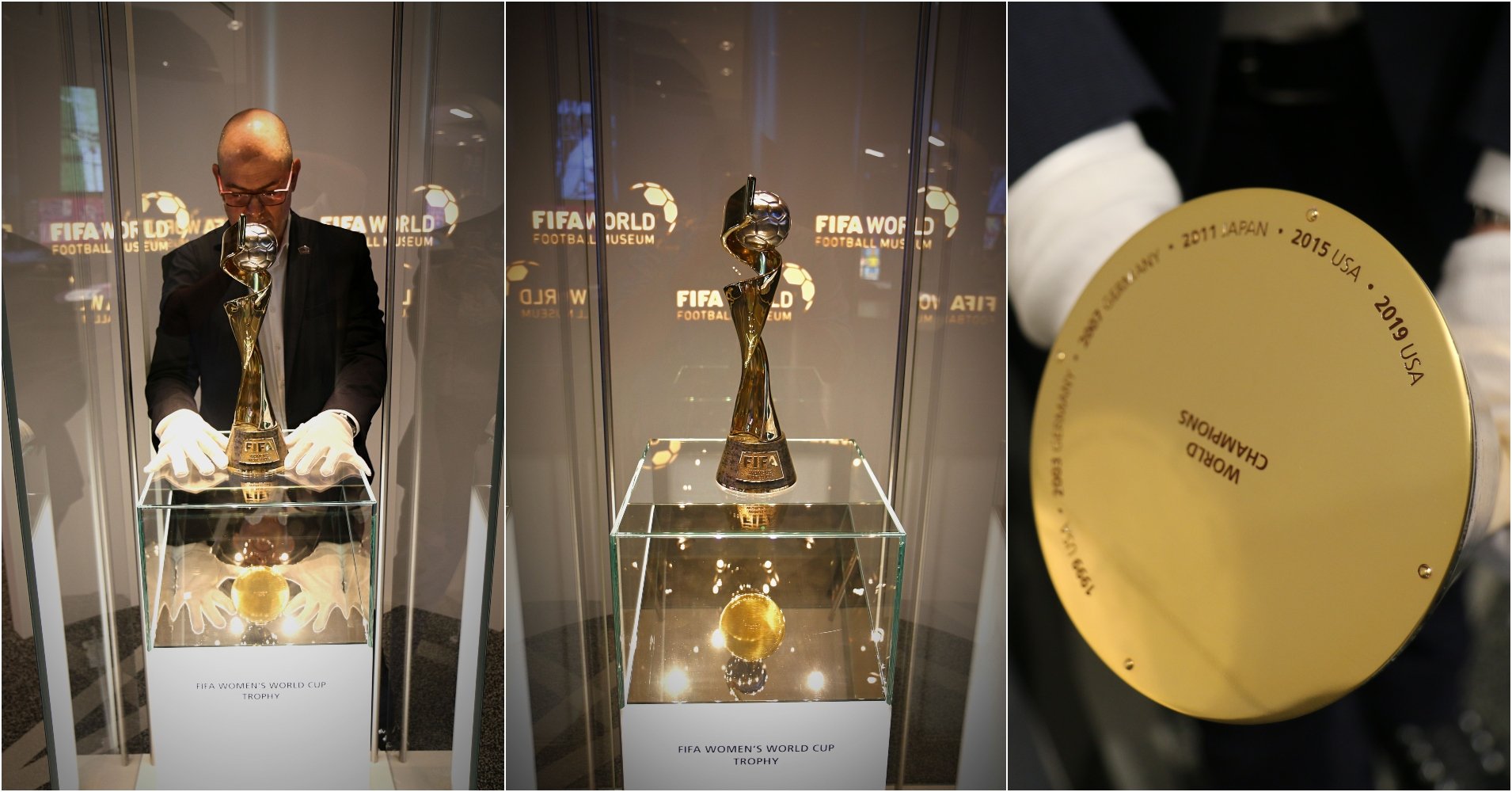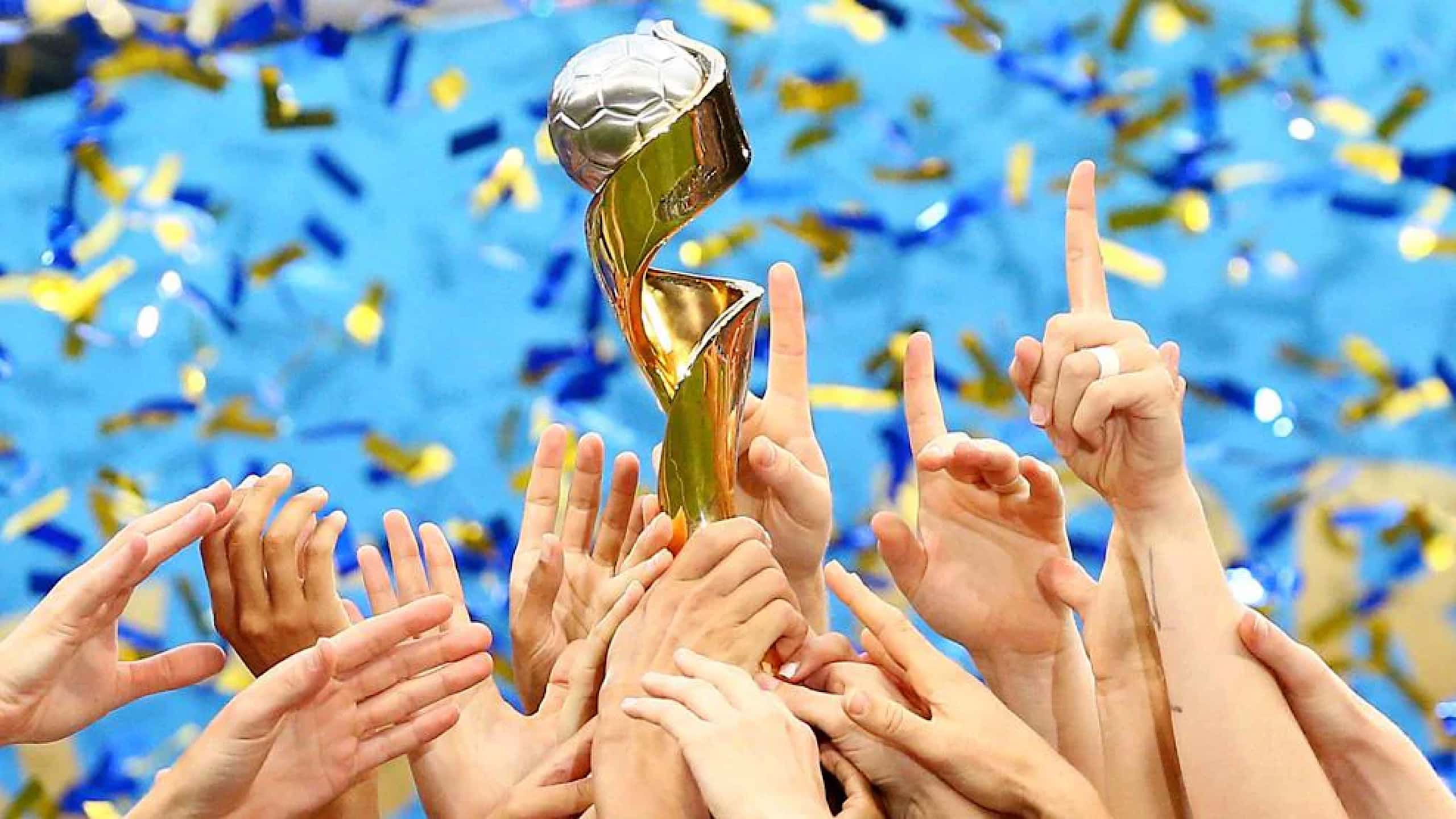Apart from being the top prize in women’s football, the FIFA Women’s World Cup Trophy has its own story behind it that you should know.
Throughout the history of the tournament, only four countries have ever lifted the FIFA Women’s World Cup Trophy. This is a small number, but it may soon change as women’s football all over the world continues to grow, players continue to develop, and the overall landscape of the sport increases the competitiveness of the game.
But, given that only four nations have lifted the trophy, it truly is one of the most elusive sports trophies in the world. And as we draw closer and closer to the biggest Women’s World Cup tournament yet, all 32 competing nations will be competing for the top prize. Here are five facts about the trophy you should know.
The first trophy was stolen.
Before the very first edition of the Women’s World Cup, FIFA commissioned Angelo Brogioli to design the trophy. This trophy was used to award the winners in 1991 and 1995.
Norway won the 1995 World Cup. And as the champions, they brought the trophy back to their home country to celebrate with their fans, and for some time, it was displayed in the Ullevaal Stadium in Oslo where fans could come and see the hardware. But, this temporary display coincided with the stadium’s renovation in 1997, and over the course of the renovations, the trophy mysteriously disappeared.

Many believed that, given the ongoing renovations at the time, the trophy had been stolen. Newspapers and other media outlets in the country urged the thieves to return the trophy, but to this day, its disappearance remains a mystery. It never resurfaced. Thankfully, Angelo Brogioli had created an exact replica of the original trophy. This one now remains safe and on display in the FIFA World Football Museum in Zurich (probably with good security, too).
A new trophy was introduced in 1999.
Right before the 1999 tournament, a new version of the FIFA Women’s World Cup Trophy was introduced. This remains the same trophy that the upcoming 2023 champions will be lifting. The current trophy was designed by William Sawaya and hand-crafted by Milanese specialists Sawaya & Moroni in 1998. Made out of bronze gold-plated, polished aluminum and Verde Candeias Granite, it is 47 centimeters tall and weighs 4.6 kilograms.
The design, which features a spiral band enclosing a football at the top of the trophy, is meant to symbolize the athleticism, dynamism, and elegance of women’s football.
The champions don’t take home the original trophy.
After every World Cup final, FIFA presents the winners with the original trophy during the awarding ceremony. This is the trophy that the team celebrates with immediately after their victory. However, the trophy they lift at the awarding ceremony is not the same trophy they take home.
After the tournament is over, the champions take home the Women’s World Cup Winner’s Trophy, which is a near-exact replica of the original trophy.
Meanwhile, the original trophy goes back to Zurich to sit on display in the FIFA Museum, awaiting the next World Cup tournament.
You can tell the difference between the original and replica trophies.
Even though the championship-winning nations take home replicas of the original Women’s World Cup Trophy, even though the replicas are highly valuable, there are still details that separate the original from the replica.

One detail is the etching of the winners at the bottom of the trophy. On the original trophy, all of the past winners of the World Cup are etched on the bottom. On the other hand, the Winner’s Trophy (which is the replica), only includes the nation that won that year.
Only a select few are allowed to touch the trophy.
As it is considered a highly valuable piece of metal that not everyone can win, you need to earn the right to hold the Women’s World Cup Trophy with your bare hands.
With this, only an exclusive list of people can touch the original trophy. This includes the players and coaches on the championship-winning team, the heads of state, and FIFA officials. For this reason, when the Women’s World Cup Trophy visited Manila on the Trophy Tour, officials were very careful, and the trophy was placed in a glass box.

Whenever the trophy is transported, officials are required to wear gloves while handling the hardware. These rules are, of course, strictly for ceremonial purposes, but they do represent the gravity that comes with winning the Women’s World Cup. As the sport continues to grow globally, it becomes increasingly more challenging to win this particular piece of metal, so while it is simply a piece of metal, it is one that has the potential to carry the pride of an entire nation.
Banner image from UEFA.
Related Stories:
5 Historic Facts About the FIFA Women’s World Cup
The Filipinas: Building on the Structure of Success
LOOK: The Filipinas Welcome World Cup Trophy in Manila
